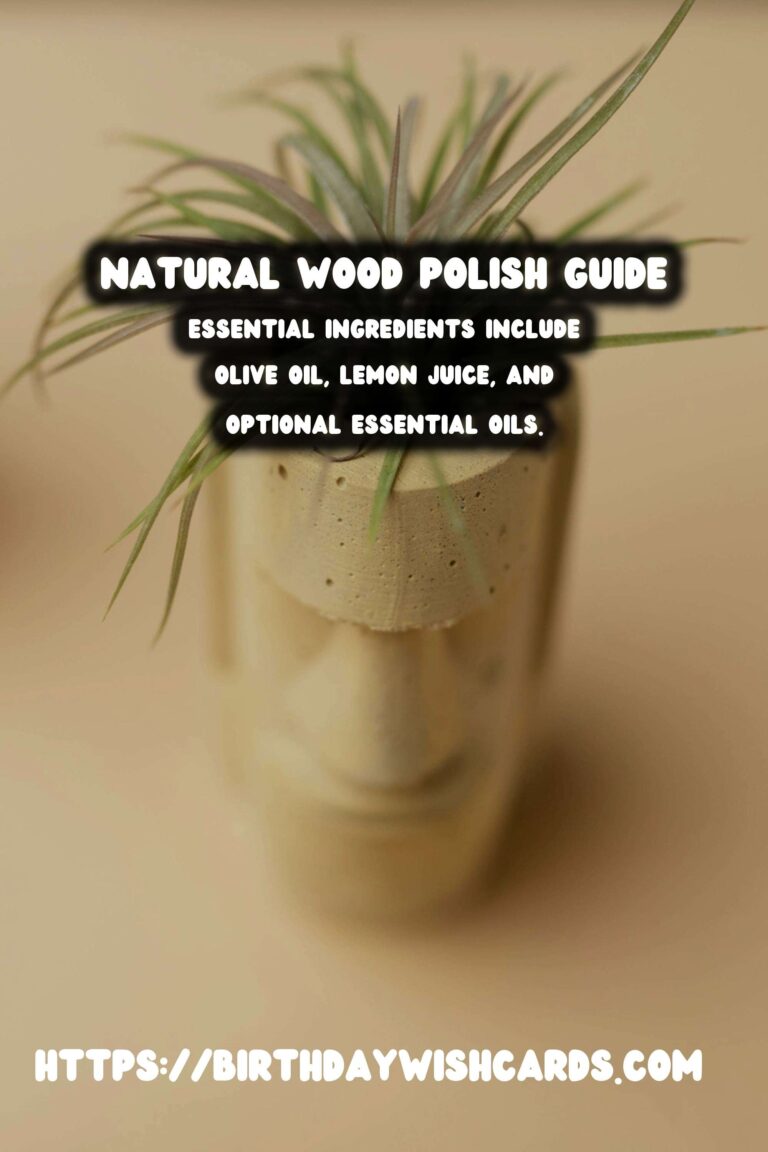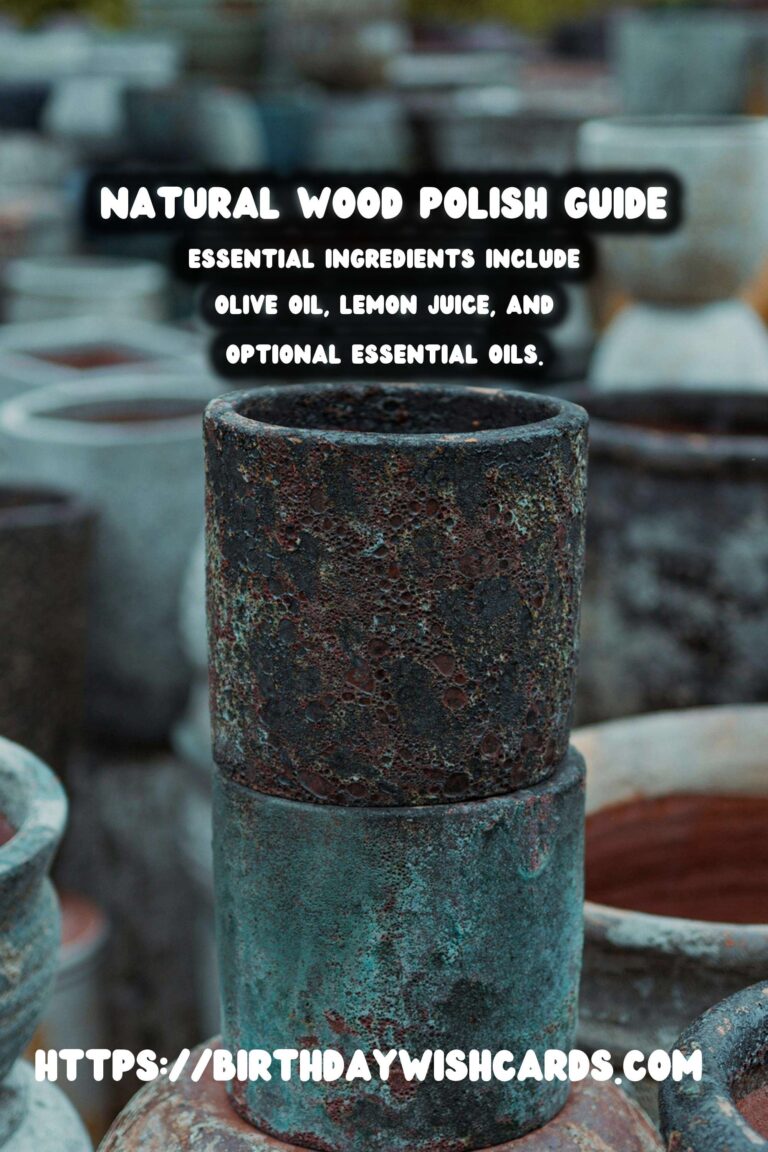
Wooden furniture and surfaces add warmth and elegance to any home. However, maintaining their natural beauty requires regular care and attention. Traditional wood polishes often contain chemicals that may harm the wood over time. That’s why many homeowners are turning to homemade natural alternatives. In this article, we will explore the benefits of using homemade natural wood polish, the ingredients needed, and how to make and apply it effectively.
Why Choose Homemade Natural Wood Polish?
Choosing a homemade natural wood polish offers several benefits, both for your furniture and the environment. Here are some reasons why you should consider making your own wood polish:
- Eco-Friendly: Homemade wood polishes are free from harsh chemicals, making them safer for the environment.
- Cost-Effective: Most ingredients for natural wood polish are common household items, saving you money.
- Customizable: You can tailor the ingredients and scent to your preference.
- Safe for Health: Natural polishes reduce exposure to potentially harmful substances, promoting a healthier home environment.
Essential Ingredients for Natural Wood Polish
Creating your own wood polish involves a few simple ingredients that are likely already in your kitchen. Here are the primary components you will need:
- Olive Oil: Acts as a conditioning agent to nourish the wood.
- Lemon Juice or Vinegar: Provides cleaning properties and a fresh scent.
- Essential Oils (optional): Add fragrance and additional antibacterial properties.
- Beeswax (optional): Offers a protective coating and additional shine.
How to Make Homemade Natural Wood Polish
Once you have gathered your ingredients, follow these simple steps to create your wood polish:
- Mix one part olive oil with one part lemon juice or vinegar in a bowl or spray bottle.
- For added scent, add a few drops of your preferred essential oil, such as lavender or orange oil.
- To include beeswax, melt it in a double boiler and mix it with the oil and lemon juice or vinegar.
- Stir or shake the mixture well until all ingredients are thoroughly combined.
Application Tips for Best Results
To ensure your homemade polish works effectively, follow these application tips:
- Clean the Surface: Before applying the polish, wipe down the wood surface with a damp cloth to remove dust and debris.
- Test a Small Area: Test the polish on a small, inconspicuous area to ensure it doesn’t affect the wood finish.
- Apply Evenly: Use a soft cloth to apply the polish evenly across the wood surface, working with the grain.
- Buff to Shine: After applying the polish, use a clean, dry cloth to buff the surface to a natural shine.
Maintaining Your Wood Surfaces
Regular maintenance is vital for preserving the beauty of your wood surfaces. Here are some maintenance tips:
- Regular Dusting: Dust your wood furniture and surfaces regularly to prevent buildup.
- Avoid Excess Moisture: Keep wood surfaces dry and avoid placing them in direct contact with water.
- Reapply Polish: Reapply your homemade wood polish every few weeks to maintain its protective layer and shine.
Conclusion
Homemade natural wood polish is an excellent alternative to commercial polishes, offering a safer, eco-friendly, and cost-effective solution for maintaining the beauty of your wood furniture. By using simple ingredients, you can create a personalized polish that meets your needs while protecting your health and the environment.
Wooden furniture requires regular care to maintain its natural beauty. Homemade natural wood polishes are eco-friendly and cost-effective. Essential ingredients include olive oil, lemon juice, and optional essential oils. Application involves cleaning, testing, applying, and buffing the wood surface. Regular maintenance and reapplication preserve the beauty of wood surfaces. 









#WoodPolish #NaturalCleaning #EcoFriendly #DIYWoodCare #HomeMaintenance




